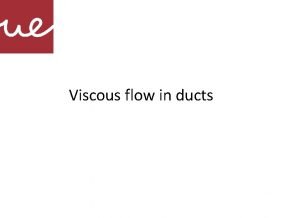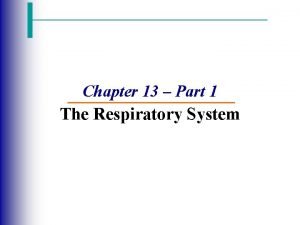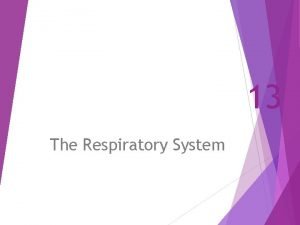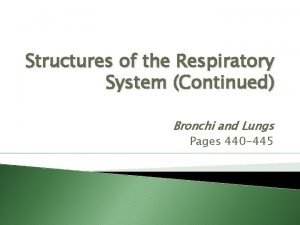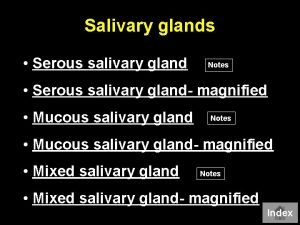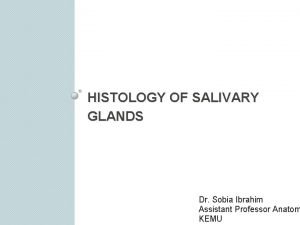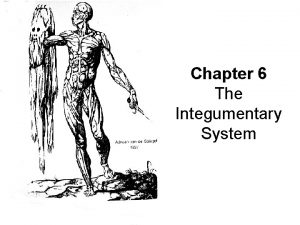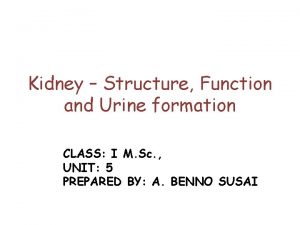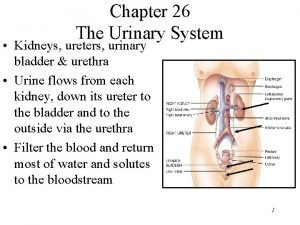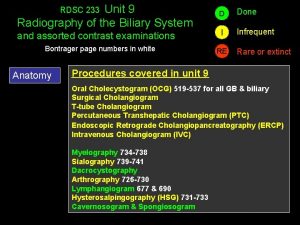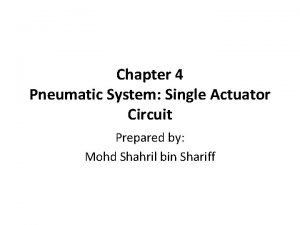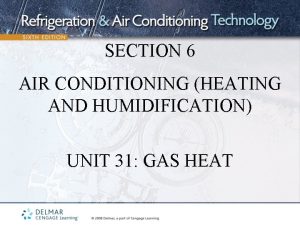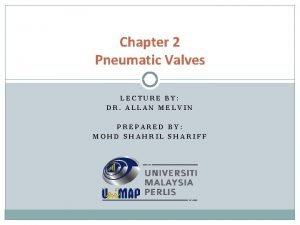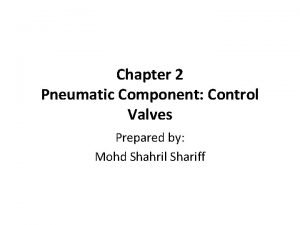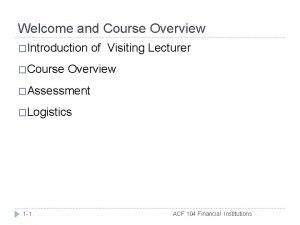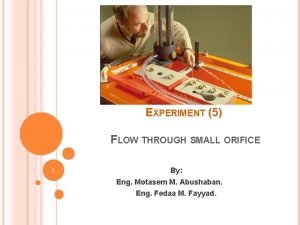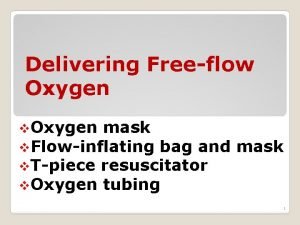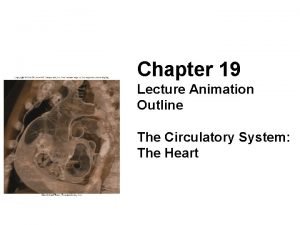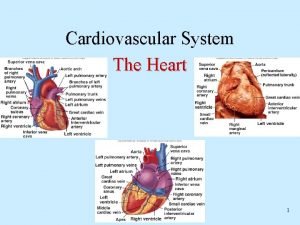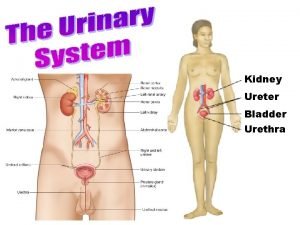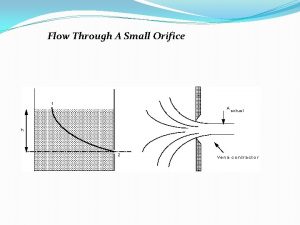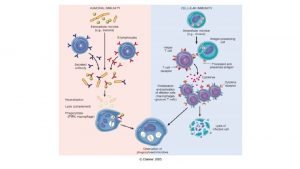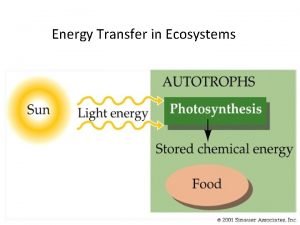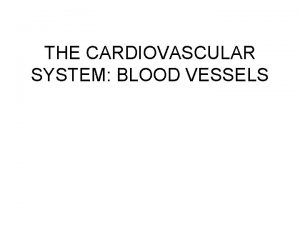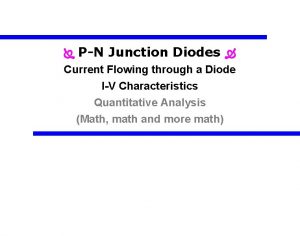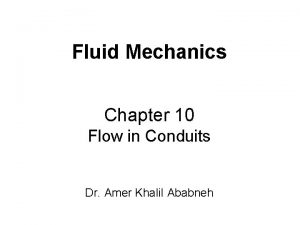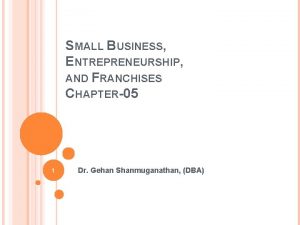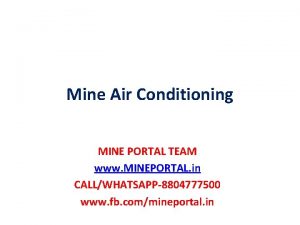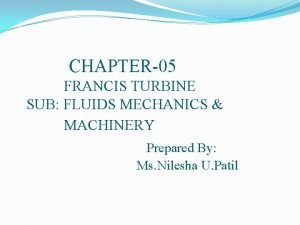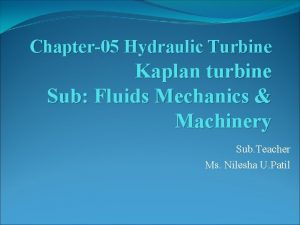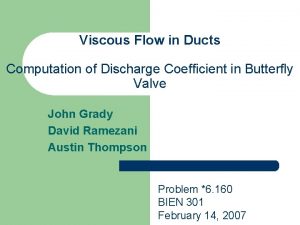Chapter05 Flow of Air Through Ducts and Mine

















































- Slides: 49

Chapter#05 Flow of Air Through Ducts and Mine openings �Introduction: § Quantity control: Ø The control of air movement, its direction and its magnitude is termed quantity control. § Ventilation: Ø The principal air conditioning process concerned with control of air circulation. 1

Flow of Air Through Ducts and Mine openings § Purpose: Ø Supply enough air for human and product needs. Ø For comfort airconditioning— 20 cfm per man Ø This requirement multiplies for various other reasons. Ø Other functions served by ventilation are control of gases, dusts, heat and moisture. Ø Thus ventilation requirements may reach up to 200 cfm per man and occasionally 2000 cfm per man. 2

Chapter#05 Flow of Air Through Ducts and Mine openings �Energy Change in Fluid Flow. �General Energy Equation: ØMine ventilation is example of steady flow ( in which the fluid is continually in motion in a liner direction through a conduit ØTransition and losses are involved in such a process. ØEnergy changes are basic to the calculation of the mine quantity and of head. 3

ØThe total energy at any section in a moving fluid consist of the sum of the internal static, velocity, and potential energies at that section Ø Total energy 1= (total energy)2 + (flow energy losses)1 -2 4

5

6

Chapter#05 Flow of Air Through Ducts and Mine openings Ø Total energy at section 1 and 2 will be Ø P 1/w +V 12/2 g+ Z 1 = P 2/w + V 22/2 g + HL (Bernoulli equation) Ø Where P/w is static energy, V 2/2 g is velocity energy, Z is potential energy and HL it is is flow loss Ø The general energy equation and Bernoulli equation in term of heads Ø HT 1 = HT 2 + HL Ø HS 1 + HV 1 + HZ 1 = HS 2 + HV 2 + HZ 2 + HL , Where Hs is static head, Hv is velocity head, and Hz is elevation head or potential head, all head have the unit of in. water 7

�Modified Energy Equation : �The elevation HZ can complicate the calculation in mine ventilation because of sizable difference in elevation �For example an elevation difference of 70 ft is equivalent to �(Z)(w/5. 2) = 70*0. 075/5. 2 = 1 in. water �It show that for each 70 ft increases in elevation the potential head term HZ increases 1 in static head will decreases 1 in. 8

Chapter#05 Flow of Air Through Ducts and Mine openings �Example: straight duct place first in horizontal and then in vertical position, let the head loss HL b/w 1 and 2 equal 3 in, and 1 atm= 408 in �Other data: for horizontal position H S 1=4 in, HV 1= 1 in, HZ 1=0 HS 2= 1 in, HV 2= 1 in, HZ 2= 0 9

Chapter#05 Flow of Air Through Ducts and Mine openings Ø Putting the above data in general energy equation so we get Ø (4 + 408) + 1+0= (1+408) +1+0+3 Ø 413=413 it is determined by using the obsolete pressure Ø Using gage pressure the equation becomes Ø 4+1+0 = 1+1+0+3 Ø 5 = 5 10

Chapter#05 Flow of Air Through Ducts and Mine openings Ø Ø Ø Given data for duct in vertical position HS 1=4 in, HV 1= 1 in, HZ 1=0 HS 2= 1 in, HV 2= 1 in, HZ 2= 1 Putting the above data in general energy equation so we get (using the absolute pressure) (4 + 408) + 1+0= (1+408) +1+0+3 413=413 Now using gage pressure 4+1+0 = 1+1+1+3 5≠ 6 Omit the HZ term from all calculation and employ a gage pressure basis, then for horizontal and vertical position of duct both will give the same value 4+1 = 1+1+3 5=5 11

Chapter#05 Flow of Air Through Ducts and Mine openings �Head losses and Mine Heads: § Head losses in fluid flow: Ø Energy which is supplied to a steady flow process by either natural or mechanical means and creates pressure difference, is consumed in overcoming flow losses, it represent by HL Ø Flow occurs due to pressure difference Ø Head losses have two components 1. Friction losses (Hf): it represent head losses in linear flow through ducts of constant area 2. Shock losses (Hx): it resulting from change in direction of flow or area of ducts 3. HL = Hf + Hx 12

Chapter#05 Flow of Air Through Ducts and Mine openings �Over all or mine heads: Ø The cumulative energy consumption termed as mine heads § Mine static head (mine Hs): it represent the energy consumed in the ventilation system to overcome all flow losses Ø mine Hs = ∑HL = ∑(Hf +Hx) § Mine velocity head (mine Hv): Hv = V 2/2 g § Mine total heads (HT): it is sum of all losses in mine ventilation system Ø mine HT = mine Hs + Hv 13

Chapter#05 Flow of Air Through Ducts and Mine openings �Pressure Gradient: �It represent the various heads components of the general equation graphically 14

Chapter#05 State of Air Flow in Mine Openings �Two type of states of flow with intermediate zone. 1. Laminar flow 2. Intermediate flow 3. Turbulent flow Ø identification of the state of low is necessary while calculating in fluid flow. Ø Because the fluid exhibits different characteristics and head losses. 15

State of Air Flow in Mine Openings Ø Criteria for identifying the boundaries State of Air Flow in Mine Openings Ø between the different states is Reynolds Number NRe. Ø Laminar flow exists up to NRe=2000 Ø Turbulant flow up to 4000 Ø These boundaries are approximate and the region between then is intermediate. Ø Reynolds number is a function of the fluid properties. 16

State of Air Flow in Mine Openings 1. NRe= (p. Dv)/µ = DV/v ----- 5 -9 2. pv is= µ v. Where p is mass fluid density (lb-sec 2/ft 4), vv is kinematic viscosity(ft 2/sec), vµ is absolute viscosity(lb-sec/ft 2), v. D is diameter of conduit in ft, v. V is velocity in fps 17

State of Air Flow in Mine Openings For air v= 1. 6*10 -4 ft 2/sec Putting values in equation 5 -9 NRe= 6250 DV ----5 -10 The fluid velocity at NRe=4000 (lower boundary of turbulent flow is called critical velocity Vc. v If the fluid velocity exceeds Vc, then flow is always turbulent. v Equation 5=11 show that turbulent flow will always prevail in mine openings v v 18

State of Air Flow in Mine Openings v. Solving for Vc in ft/m and Setting NRe=4000 v. Vc=(60 NRe/6250 D) v. Vc=(60*4000/6250 D) = 38. 5/D v. Or approximately Vc =40/D -------5 -11 v. In mining turbulent flow is desirable. v. This insures satisfactory dispersion and removal of contaminants. 19

State of Air Flow in Mine Openings �For a pipe having 1 ft diameter will have a critical velocity of 40 fpm. �Mine openings of 3 ft diameter will have a velocity of 13 fpm and be a turbulent flow. 20

Effect of state of flow on velocity distribution ü Velocity in a conduit varies as the Reynolds number varies (Fig. 5 -9). ü Maximum velocity Vmax occurs at the center of the conduit. ü in ventilation the concern is avg. velocity and not the maximum velocity. ü The variation of V with Vmax is determined as a function of Reynolds number (fig. 5 -10). ü This graph enables one to find the avg. Velocity when only one measurement along the center line has been made. 21

Effect of state of flow on velocity distribution ØHowever since, Ø Mine opening are non circular Ø And many irregularities of the walls tend to produce non- symmetrical flow pattern Ø The Reynolds number generally exceed 10, 000 ØApproximate value is taken. Øi. e V= 0. 8 Vmax. 22

Calculation of head losses o Velocity head: § Velocity head represents energy which has to be supplied to maintain flow. § It is lost to the system at discharge. § It must be taken at the discharge to calculate the mine heads. § Measurement of velocity head permit to calculate velocity of air flow. 23

Velocity head § § § Derivation of equation: Starting with basic relation, Hv=V 2/2 g -----5. 2 Where V is in fps and Hv is in ft of fluid. Applying equation 2 -1 § i. e P= w 1 H 1=w 2 H 2 24

Velocity head § Hv =w. V 2/(5. 2*64. 4*602) =w(V/1098)2 ----5 -13 § Where V is in fpm and Hv in inches of water. § For standard air w = 0. 075 lb/cu ft § Hv =(V/4000)2 -------5 -14 § It states that velocity of 4000 fpm is equivalent to 1 inch of water. 25

Friction losses Atkinson Equation �Friction losses constitutes 70 -90 % of the total losses. �These are of greater importance than shock losses �Deserves more care. �A loss in static pressure. �Occur in linear flow due to dragging action between walls of the opening and fluid itself. �Friction loss in a mine is a function of 1. Velocity of flow 2. Interior surface characteristics of the conduit. 3. Dimensions of the conduit. 26

Friction losses Atkinson Equation �In mine ventilation systems the flow is always turbulent. �Fanning- Darcy equation for friction loss in a circular conduit is �HL = (f. L. V 2)/(D. 2 g) --------5 -15 �Where HL is head loss in ft of fluid, �L is length in ft. �D is diameter in ft. �V is velocity in fps. �f is coefficient of friction 27

Friction losses Atkinson Equation �Hydraulic radius RH is the ratio of the area to the perimeter of the duct. �RH = A/P �For circular duct �A =(π/4) D 2 �P = πD �Putting values �RH =D/4 ------ 5 -16 � D=4 RH 28

Friction losses Atkinson Equation �Substituting equation 5 -16 in equation 5 -15 �HL = (f*L*V 2)/(4*RH*2 g) -----5 -17 �From this version the Atkinson equation for mine ventilation can be derived as �Hf= (f/5. 2)*(L/4 RH)*(0. 075 V 2)/(2 g*3600) �Hf= (KLV 2)/(5. 2 RH)=(KPLV 2)/(5. 2 A)----5. 18 �Where Hf =friction loss in inches of water. �V is the velocity in fpm) �K is an empirical friction factor in lb. min 2 /ft 4 29

�This equation can also be written as; Hf = KSV 2 / 5. 2 A ---5. 19 Where S (rubbing surface) = PL �If quantity of air is known then V = Q/A �Equation can be written as Hf = KPLQ 2 / 5. 2 A 3 ---5. 20 30

�The friction factor K in mine ventilation corresponds to the coefficient of friction f in general fluid flow. �Mathematically K = (800) (10)-10 f ---5 -21 31

Determination of Airway Friction Factor �The only accurate way to determine the friction factor for a given airway is to calculate it by equation Hf= (KPLV 2)/(5. 2 A) 32

Friction Factor K for Coal Mine Airways and Openings Value of K x 1010 Straight Curved e of ay clean Slightly obstructed Moderately obstructed Clean Slightly obstructed Moderatel obstructed oth d 25 28 34 31 30 43 ned k ed) 43 49 61 62 68 74 bered 67 75 82 85 87 90 33

�Observe the following precautions in selecting a value of friction factor from the table (5 -1 from book) and 5 -2 given in table above for use in calculations: �To provide correct values of K, multiply the numerical values obtained from the table by 10 -10 , and attach units of lb. min 2 /ft 4 �Employ a value of K determined or checked experimentally, if at all possible. This should be used on the results of actual tests conducted underground in the opening and ventilation duct involved. 34

�Tables 5 -1 and 5 -2 list values of K based on standard air density. Since K is proportional to w, correct K for actual w by formula corrected K = (table K) (w/0. 0750) ---5 -22 before using Eqs 5 -18 to 5 -20 �Select K carefully for the conditions (rock type, straightness, cleanliness, irregularities etc) prevalent in the airway. �If the airway is timbered and sets are spaced on other 35

than 5 ft centers, modify K according to Fig 5 -11. If roof bolting is used in place of timbering, assume an unlined airway. Example 5 -3. Select the friction factor for a highly sinuous, slightly obstructed drift in igneous rock. Solution: From table 5 -1, read K=120 to 225 x 10 -10 lb. min 2 /ft for minimum to maximum irregularities. If no other information is available, and assuming standard air density, use average value K = 175 x 10 -10 lb. min 2 /ft 4 4 36

Example 5 -4. Select the friction factor for a straight, clean, unlined entry in coal, if w = 0. 065 lb/ft 3. Solution: From table 6 -2, read K = 43 x 10 -10 lb. min 2 /ft 4 Corrected K = (43 x 10 -10 )(0. 065 / 0. 075) = 37 x 10 -10 lb. min 2 /ft 4 37

Determination of Friction Factor for Vent Pipe �Friction Factor to use with different types of ventilation pipe or tubing vary with the material and its condition. The following are satisfactory for routine calculations ( based on w = 0. 075 lb/ft 3 ) 38

Friction Factor, K x 1010 lb. min 2 /ft 4 (kg / m 3 ) Pipe or Tubing Good, New Average, Used Steel, wood, fiberglass (rigid) 15 (0. 0028) 20 (0. 0037) Jute, canvas, plastic (flexible) 20 (0. 0037) 25 (0. 0046) Spiral-type canvas 22. 5 (0. 0042) 27. 5 (0. 0051) 39

Calculation of Friction Loss by Formula �Friction Loss in a mine duct or airway can be calculated by eq: Hf= (KLV 2)/(5. 2 RH)=(KPLV 2)/(5. 2 A) And Hf = KPLQ 2 / 5. 2 A 3 � A separate calculation is necessary for each airway of different characteristics ( K) or cross-sectional dimensions (A, P) and for each different airflow (V or Q). 40

�For different airflows in a given airway, solve KPL/5. 2 A 3 separately and multiply by Q 2. �For different airway lengths or friction factors, multiply Hf by the ratio of lengths or friction factors, respectively. Example 5 - Determine the friction loss in a mine airway, by formula under the following conditions: unlined airway in coal, curved, moderately obstructed. Size 4 x 12 ft , L = 3000 ft, Q = 48, 00 cfm, w = 0075 lb/ft 3. 41

Solution: Using equation 5 -20 Select K = 80 x 10 -10 Hf = (80)(32)(3000)(4800)2 / (5. 2)(48)3(10)10 = 0. 0308 in Example 5 -6. Determine the friction loss in mine vent tubing, by formula under following conditions; jute vent tubing, average condition; D= 18 in, L = 3000 ft, Q = 4800 cfm, w = 0. 075 lb/ cu. ft. 42

Solution: Using Equation Hf = KPLQ 2 / 5. 2 A 3 = (25)(4. 71)(3000)(4800)2 / (5. 2)(1. 77)3 (10)10 = 28. 4 in. 43

Compressibility Effect �The effect of the compressibility of air has been ignored in the discussion to date. �The effect is small with the usual pressure heads existing in mine ventilation systems. �The mine static head is usually less than 10 in water which means the error in assuming a constant air quantity is approx 2%. �In long ventilation pipe, however the change in pressure may be measured in psi, and compressibility can no longer be ignored. 44

�In determining the friction loss it may be necessary to apply the formula for compressed air flow, which for ventilation calculation is expressed as follows: p 12 – p 22 = Kc Q 2 L/ D 5 ----- 5 -23 where p absolute pressure in psi Q quantity of free air in cfm D diameter in inches Kc compression friction factor 45

Shock Loss �Shock loss occur in addition to friction losses �These losses are caused by changing the direction of air flow or the area of the duct. �Obstruction cause shock loss by in effect reducing the duct area. �While generally constituting only 10% to 30% of the total head loss in mine ventilation systems, shock losses should always be considered in exact calculations in major airways or in short length of duct with many bends or area changes. 46

�For a given source of shock loss; the pressure drop varies as the square of the velocity or directly as the velocity head. 47

Calculation of Sock Loss �Calculation of shock loss can be carried out in several ways. 1. Calculation of Sock Loss directly: The amount of shock loss Hx in in water can be calculated from the velocity head Hr Hx = XHr Where x is shock-loss factor. �This factor roughly comparable to the friction factor K in friction loss is a constant only for a given constant set of conditions. 48

2. Calculation of Shock Loss by Increase in Friction Factor: �Either a calculated or estimated increment in the friction factor K may be applied to allow for shock losses in each airway in a mine ventilation system. �Table 5 -1 includes several allowances for shock loss which gives equivalent lengths for various sources of shock loss in feet. �It gives appropriate 49
 Hydraulic diameter formula
Hydraulic diameter formula Porphyrias lover meaning
Porphyrias lover meaning Respiratory tree divisions
Respiratory tree divisions Breathing control
Breathing control Lesson 12 blood and immune system
Lesson 12 blood and immune system Duct system female reproductive
Duct system female reproductive Alveolar ducts
Alveolar ducts Mucus vs serous glands
Mucus vs serous glands Gruczoł
Gruczoł Subareolar ducts
Subareolar ducts What glands are flask shaped with short ducts
What glands are flask shaped with short ducts Collecting ducts
Collecting ducts Collecting ducts
Collecting ducts Collecting ducts
Collecting ducts Interlobular ducts
Interlobular ducts A radiographic examination of the bile ducts
A radiographic examination of the bile ducts Hubungan air dengan tanah
Hubungan air dengan tanah Tangential sawing advantages
Tangential sawing advantages Through one man sin entered
Through one man sin entered Classes of furcation
Classes of furcation Night of the scorpion talks about
Night of the scorpion talks about Dfd to structure chart
Dfd to structure chart Transform flow and transaction flow
Transform flow and transaction flow Define irrotational flow
Define irrotational flow Internal flow examples
Internal flow examples Control flow and data flow computers
Control flow and data flow computers Difference between laminar and turbulent flow
Difference between laminar and turbulent flow Single acting cylinder example
Single acting cylinder example Return air and supply air
Return air and supply air Flow control valve direction
Flow control valve direction Pneumatic flow control valve diagram
Pneumatic flow control valve diagram Measure air temperature and measure air pressure
Measure air temperature and measure air pressure Financial intermediaries
Financial intermediaries River 34 km long
River 34 km long Which countries does the mekong flow through
Which countries does the mekong flow through Flow through an orifice lab report discussion
Flow through an orifice lab report discussion How does energy flow through an ecosystem
How does energy flow through an ecosystem Do not give free flow oxygen through
Do not give free flow oxygen through Financial markets instruments and institutions
Financial markets instruments and institutions Steps of blood flow through the heart
Steps of blood flow through the heart Chemoreceptors vs baroreceptors
Chemoreceptors vs baroreceptors Raceways in aquaculture
Raceways in aquaculture What is the function of the bladder
What is the function of the bladder Flow through small orifice
Flow through small orifice Myelinzation
Myelinzation Energy flow through an ecosystem is ----- *
Energy flow through an ecosystem is ----- * Blood flow through the heart easy
Blood flow through the heart easy Pearson mastering
Pearson mastering Diode current equation
Diode current equation Reynolds number for pipe flow
Reynolds number for pipe flow
